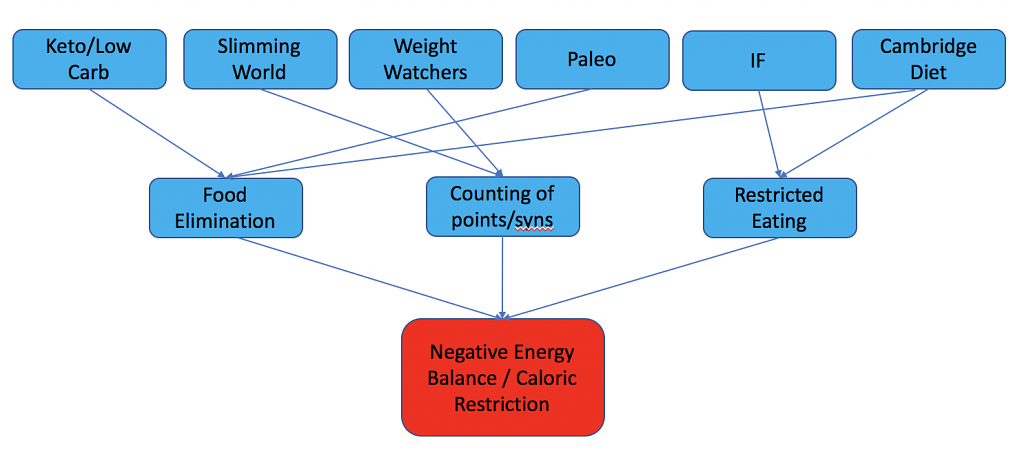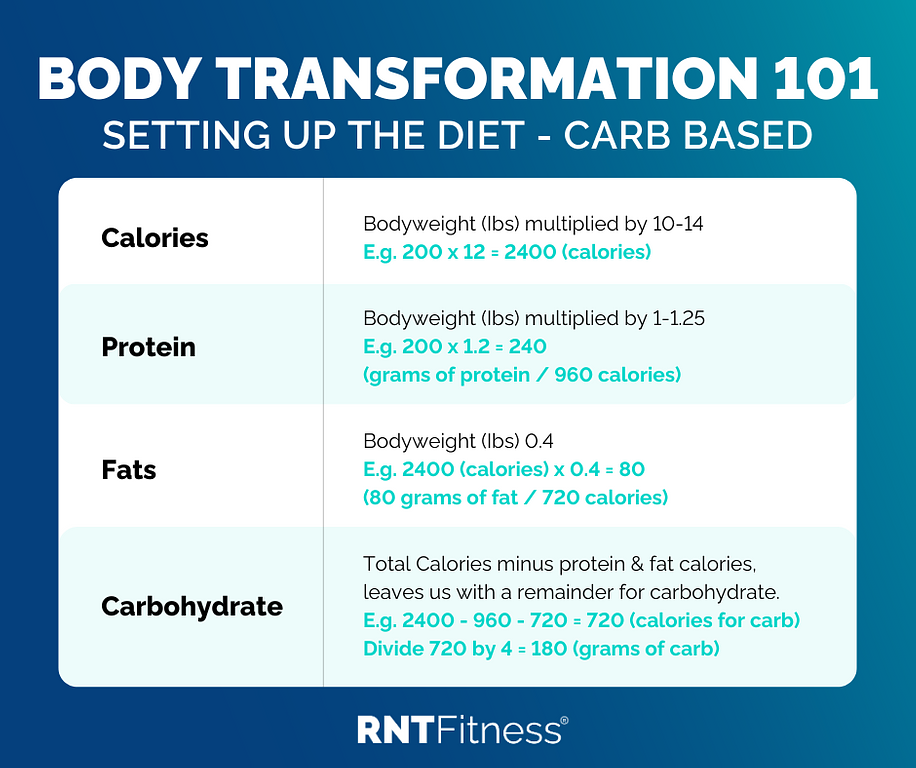Energy Balance
- Decreased input, or food
- Increased output, or movement/exercise
What’s The Best Diet?
They create a calorie deficit!

Is A Calorie Deficit All We Need To Worry About?
- Have a maximum calorie allowance
- Set a minimum protein target
How Many Calories Do You Need?
Setting Up A Fat Loss Diet
Calories:
Protein:
Fat:
Carbohydrates:
1g protein = 4 calories
1g carbs = 4 calories
1g fat = 9 calories



